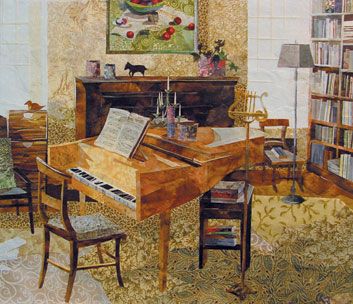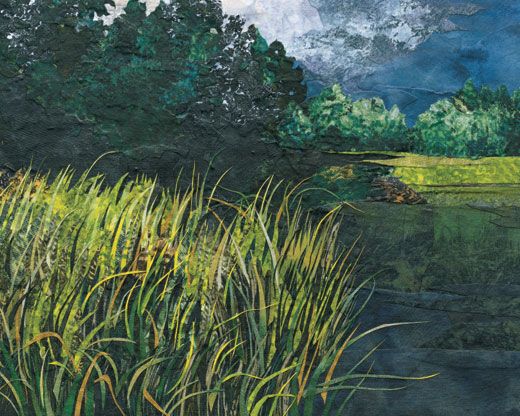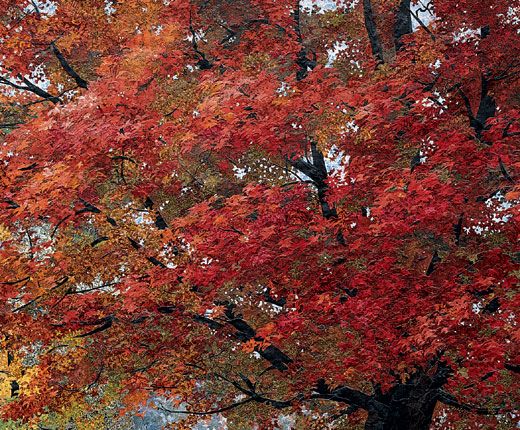Fabricating Art
Laura Breitman fashions photo-realist collages out of whole cloth
The large glass doors in Laura Breitman’s Warwick, New York, studio frame views of dense woods and rock ledges soon to be covered with wild columbine. In winter, when the tangled branches are dusted with snow, the scene closely resembles one of Breitman’s remarkable trompe l’oeil fabric collages.
Using fabric like paint, Breitman, 54, makes intricate, astonishingly realistic images based on old master paintings and photographs of landscapes, urban scenes and interiors. She is one of 120 American artists whose work will be on view at the Smithsonian Craft Show later this month in Washington, D.C.
"I’ve always loved fabric," she says. "I started with quilts and pillows, but after I took a class in collage, I wanted to see if I could re-create an image in detail in fabric. Originally I tried to set up a still life in my studio and work from that, but I couldn’t find the point where I had left off each time. So I took a photograph of the still life, and made a grid on it, blocking off everything but the square I was working on, and the collage came out looking just like the photo."
Breitman positions thousands of bits of cloth—from slivers to two-inch squares—onto her canvas, like so many overlapping brushstrokes. To get the variegated colors and graduated shades of light and dark just right, she often bleaches, dyes or block prints the fabric. Most of the time she uses flat-weave quilters’ cotton, but she’s been known to raid her closet for an elusive fragment. The wardrobe of her photographer husband, Michael Needleman, however, is usually safe. "Lucky for him, he wears a lot of flannel plaids," she says.
When a picture is complete, Breitman applies a matte varnish, which gives it a more uniform texture. Up close, the snippets of patterned cloth are visible; but from a distance, the pieces morph into photo-realist illusions.
Breitman has been a textile designer in New York City’s garment district, a welder in her family’s Bronx ironworks, even a cabdriver and waitress. Along the way, she studied design, graphics, photography and children’s book illustration. She draws special inspiration from artist Chuck Close, whose large portraits are highly realistic. "I worship him," she says. "His grid method, one square at a time...has a lot to do with what I do." She’s also influenced by the eccentric works of unknown artists—a bouquet of flowers made of shells she once saw in a historic house, or a vintage Chinese painting created with butterfly wings she spotted on PBS’s Antiques Roadshow. "What I do is closely related to those impulses," she says, "using unexpected materials not normally associated with the result...and fooling the eye."


